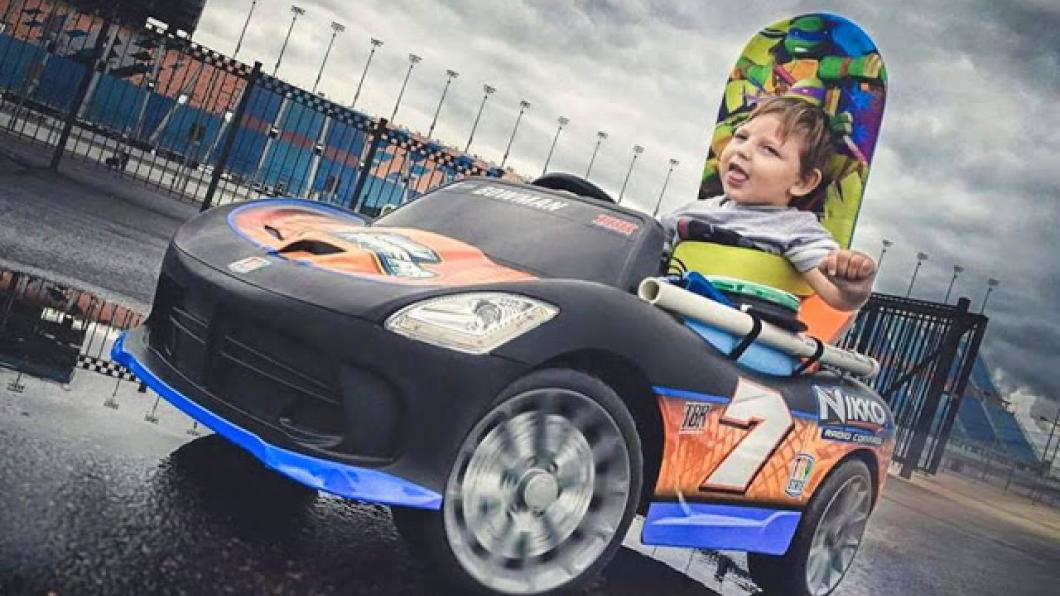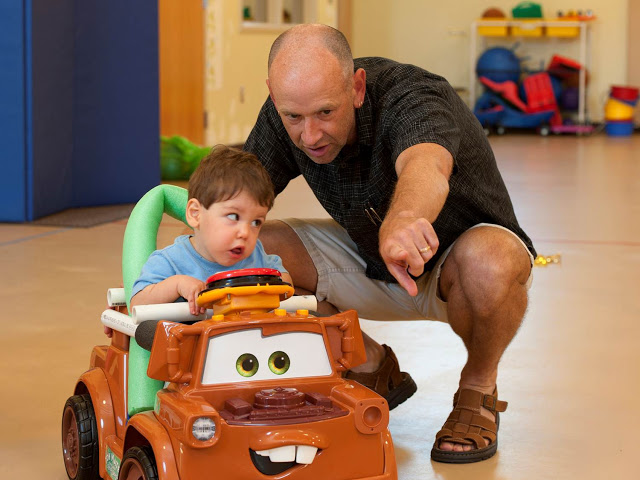
A scientist works with toy maker to get disabled kids moving
By Louise Kinross
Five years ago, Cole Galloway had an existential crisis.
The scientist at the University of Delaware was publishing papers about developmental gains in pre-crawling babies who were given robots they could drive with a joy stick.
“Everyone was happy, with the exception of one group—families of kids who needed power wheelchairs,” says the professor of physical therapy. “Their kids are waiting four to seven year to get mobile. When they do, the lightest chair is 150 pounds and costs up to $45,000. Families typically keep them at home or at school, but never in-between, because it’s a nightmare to get them around.”
Cole says he felt like a fraud returning to his lab to churn out studies that wouldn’t benefit immobile kids in the real world. “I either had to give up this work or find a low-cost alternative because the community needed something now.”
He turned to Toys R Us and Fisher Price.
Today, he leads Go Baby Go, a grassroots research and advocacy group that’s adapted 6,000 toy ride-on cars for toddlers with disabilities through 60 chapters, many of them run at local schools. The cars cost under $200 to buy and another $100 to modify with a bigger push button, more stable seating and a safety cage.
Mobility is a human right, Cole says. “When we don’t give a kid a wheelchair until they’re three years old, it’s a failure. It’s way too long to wait. They’ve missed hundreds of thousands of opportunities to move and connect and socialize with their peer group.” Movement gives kids access to a rich environment that helps their brains grow, he says.
A blind spot in research is the absence of families at the table. “Medical researchers are usually taught to have an arms-length distance from users, to work separately from the real world. So the people we purport to care for are not involved in the design of things.” What results is often not nimble or beautiful.
For example, he compared a bulky $10,000 exoskeleton device that helps a child lift their arms with an inexpensive, invisible alternative designed by a colleague: $25 worth of piano wire sewn into a child’s onesie.
“A fashion designer walked into our lab and said: ‘Why do you put things on this population that you purport to love that you wouldn’t be caught dead in?’”
To get closer to user needs, Cole does real-world research. “The perfect lab isn’t a magic building where only kids with special needs go,” he says. “It’s a regular child-care centre, a playground, a living room where I can compare what you’re doing with your typically developing peers. Scientifically we want enriched environments to build big brains and that means leaving the lab.”
Cole is studying a harness system that can be used by people with brain injuries in everyday environments like a house or restaurant—rather than only on a treadmill in a gym.
A lack of innovation characterizes many medical markets, Cole says. “Think of someone working at NASA or in other high-tech programs. If that person, who works on the deepest questions about our universe, has a stroke, the next day they’ll work with 11th century technology. They’ll get a walker. We can do way better.”
Cole is trying to create a mandate for user-centred design. When asked why we don't have more intuitive voice devices for kids who don't speak, he said we need to involve non-verbal kids in how they're made.
Go Baby Go is based on a do-it-yourself mantra. “We’re taking medical equipment and hacking it and taking toys and hacking it,” Cole says.
But while some equipment makers are threatened when Cole adapts their products, the toy industry welcomes him. “They said we’ll work with you, we’ll consult with you. The difference is that they’re innovators. The Power Wheels team at Fisher Price is made up of artists, engineers and researchers. They want to have direct impact. They need to reinvent their toys every year or two, so they’re constantly innovating to make more kids have fun.”
For example, a new Fisher Price driving toy called Power Wheels Wild Thing has universal design features that benefit kids with disabilities. The toy, which costs $250CDN, drives straight and back, spins, and has three speeds. “The seat is deeper and tilted back which likely helps kids with spinal cord injury and spina bifida have fun,” Cole says. Cole says Go Baby Go has already had requests to modify the product.
Cole presented at the CP-Net Science and Family Day at Holland Bloorview recently. Watch his talk.
